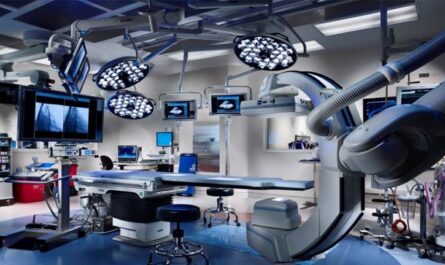
Gallbladder cancer is a rare but deadly form of cancer that develops in the gallbladder – a small organ located beneath the liver that stores and concentrates bile produced by the liver. Though rare, the incidence of gallbladder cancer is increasing steadily in many parts of the world making it an important topic to create awareness about. This article provides detailed information on gallbladder cancer including causes, risk factors, symptoms, diagnosis and treatment options available.
What is the gallbladder?
The gallbladder is a small pear-shaped organ located just below the liver in the upper right portion of the abdomen. It acts like a storage pouch or reservoir for bile – a digestive fluid produced by the liver. When food containing fat enters the small intestine, the gallbladder contracts and pushes out the stored bile through ducts to help in the digestion and absorption of fat and fat-soluble vitamins.
Types of gallbladder cancer
There are two main histological subtypes of gallbladder cancer:
– Adenocarcinoma – This is the most common type accounting for around 95% of all gallbladder cancers. It begins in the glandular (mucus secreting) cells that line the inner surface of the gallbladder.
– Squamous cell carcinoma – These cancers arise from squamous cells that line the gallbladder. Squamous cell carcinoma accounts for less than 5% of gallbladder cancers.
Causes and risk factors
The exact causes of gallbladder cancer are unknown but certain factors are known to increase the likelihood. Some key risk factors include:
– Gallstones – Chronic gallstone disease is the biggest risk factor with 60-80% of gallbladder cancer patients having a history of gallstones.
– Gender – Women are twice as likely to develop gallbladder cancer as men.
– Age – Risk increases with age with most cases occurring after 60 years of age.
– Ethnicity – In the US, Native Americans and Hispanic Americans have higher rates of gallbladder cancer.
– Chronic inflammation – Conditions leading to chronic inflammation of the gallbladder lining such as typhoid can increase risk.
– Smoking – Tobacco smoking is an independent risk factor for gallbladder cancer. The risk increases with more smoking.
– Obesity – Being overweight or obese is also linked to higher gallbladder cancer risk.
Signs and symptoms
In the early stages, gallbladder cancer may not cause any noticeable signs or symptoms. However as the cancer progresses, common symptoms may include:
– Constant pain in the upper right or middle abdomen
– Unexplained weight loss
– Loss of appetite
– Fever
– Nausea or vomiting
– Yellowing of skin and eyes (jaundice)
– Enlarged liver
Due to vague or no symptoms at an early stage, gallbladder cancer is often diagnosed at an advanced stage when chances of survival are lower. So awareness of risk factors and prompt medical consultation for ongoing abdominal pain is important.
Diagnosis and staging
If symptoms indicate a potential gallbladder issue, the doctor will conduct various tests to confirm diagnosis. These may include:
– Blood tests – To check liver function and detect elevated levels of certain substances.
– Ultrasound – Helps visualize the gallbladder and detect any masses or thickening of gallbladder walls.
– CT scan – Provides accurate images of the abdomen to determine if the cancer has spread.
– MRI – Details internal organs and blood vessels better than CT scan.
– Endoscopic ultrasonography – Special probe inserted through mouth into stomach to get close images of gallbladder.
– Biopsy – Taking small samples of suspicious tissue for examination under microscope to confirm cancer.
Once diagnosed, cancer is staged using the TNM (tumor-node-metastasis) system based on extent of primary tumor, spread to lymph nodes and distant metastasis. This helps determine treatment and prognosis.
Treatment and prognosis
Surgery is the main treatment for early stage gallbladder cancer that has not spread. Options may include:
– Cholecystectomy – Surgical removal of the gallbladder.
– Radical cholecystectomy – Removal of gallbladder along with segments of liver, lymph nodes and other organs nearby if invaded.
For advanced stages where surgical resection may not be possible, additional therapies may be given:
– Chemotherapy – Drugs to shrink tumor before or after surgery. May improve survival.
– Radiation therapy – High-energy rays to kill cancer cells and shrink tumors especially if cancer recurs after surgery.
– Targeted therapy – Drugs that target specific cancer cell genes or proteins to stop growth and spread.
– Palliative care – Focuses on relieving pain and improving quality of life if cancer cannot be cured.
The prognosis or outlook varies based on stage at diagnosis. For stage I cancer detected early, surgery alone may potentially cure. However at advanced stages survival rates are low requiring aggressive multi-modal treatment. With early detection and best available care, survival outcomes continue improving for gallbladder cancer patients.
Prevention and screening
There are no widely recommended screening tests to detect gallbladder cancer early before symptoms as the incidence is low in general population. However, people with certain risk factors can take some preventive measures:
– Maintaining a healthy weight through diet and exercise can reduce obesity-related risk.
– Not smoking or quitting smoking can eliminate the effect of tobacco on gallbladder cancer risk.
– Getting gallbladder removed (cholecystectomy) is recommended in those with gallbladder polyps larger than 10mm in size or multiple polyps as they can be pre-cancerous.
– Prompt treatment of gallstone disease and inflammations of gallbladder through surgery or medications helps eliminate chronic irritation which can progress to malignancy over time.
In summary, while current scientific advancements have improved outcomes, awareness and early diagnosis remain key to fighting gallbladder cancer. Maintaining a wholesome lifestyle and seeking medical advice for persistent abdominal discomfort can help reduce the burden of this deadly disease. With collective effort from researchers and the public, more effective prevention and screening strategies can be developed in future.



